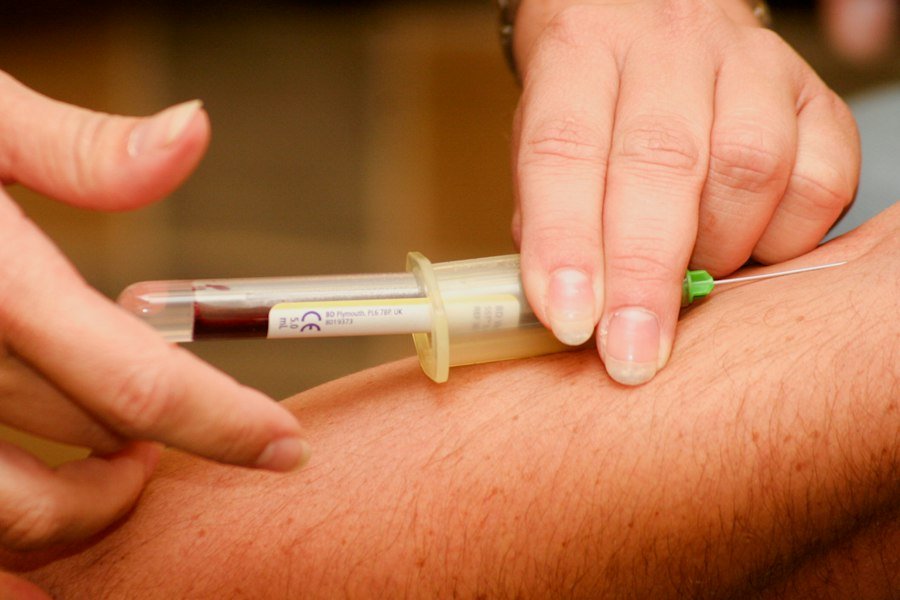

Medical Italian: Essential Italian Vocabulary for Healthcare Workers
Language plays a crucial role in healthcare, as effective communication between healthcare providers and patients is essential for providing quality care. In an increasingly globalized world, healthcare professionals are encountering patients from diverse linguistic backgrounds, including Italian-speaking patients. This is where Medical Italian comes into play.
Learning Medical Italian can provide numerous benefits for healthcare workers. Firstly, it allows for better communication with Italian-speaking patients, which can lead to improved patient satisfaction and outcomes. When patients are able to effectively communicate their symptoms and medical history, healthcare providers can make more accurate diagnoses and develop appropriate treatment plans.
Furthermore, Medical Italian can help healthcare workers build rapport with their Italian-speaking patients. By speaking their language, healthcare providers show respect for the patient’s culture and create a more comfortable and trusting environment. This can lead to increased patient compliance and cooperation throughout the course of treatment.
Table of Contents
ToggleBasic Italian Vocabulary for Patient Assessment and History Taking
When interacting with Italian-speaking patients, it is important to have a basic understanding of key vocabulary for patient assessment and history taking. This includes greetings and introductions, asking about symptoms and medical history, as well as basic questions for patient assessment.
In terms of greetings and introductions, healthcare workers should be familiar with phrases such as “Buongiorno” (Good morning) or “Buonasera” (Good evening) to greet patients. Additionally, knowing how to introduce oneself by saying “Mi chiamo [name]” (My name is [name]) can help establish a friendly and professional rapport.
When asking about symptoms and medical history, it is important to know phrases such as “Quali sono i suoi sintomi?” (What are your symptoms?) or “Ha avuto problemi di salute in passato?” (Have you had any health problems in the past?). These questions can help gather important information about the patient’s condition and medical background.
Basic questions for patient assessment may include asking about pain levels using phrases like “Su una scala da 1 a 10, quanto è il suo dolore?” (On a scale of 1 to 10, how would you rate your pain?). Additionally, knowing how to ask about allergies by saying “Ha delle allergie?” (Do you have any allergies?) is crucial for patient safety.
Medical Terminology for Common Illnesses and Conditions
In order to effectively communicate with Italian-speaking patients, healthcare workers should be familiar with medical terminology for common illnesses and conditions in Italy. This includes understanding the terminology for diagnosis and treatment, as well as being able to interpret medical reports and records.
Common illnesses and conditions in Italy may include “influenza” (flu), “asma” (asthma), or “diabete” (diabetes). It is important to be able to recognize these terms in order to understand the patient’s condition and provide appropriate care.
Medical terminology for diagnosis and treatment may include phrases such as “esame del sangue” (blood test), “radiografia” (x-ray), or “terapia farmacologica” (pharmacological therapy). Understanding these terms can help healthcare providers discuss diagnostic procedures and treatment options with Italian-speaking patients.
Interpreting medical reports and records is another important aspect of Medical Italian. Being able to understand terms such as “anamnesi” (medical history), “diagnosi” (diagnosis), or “terapia prescritta” (prescribed therapy) can help healthcare workers review and discuss patient records accurately.
Italian Vocabulary for Physical Examinations and Diagnostic Tests
During physical examinations, it is important for healthcare workers to be able to communicate effectively with Italian-speaking patients. This includes knowing vocabulary for physical examinations, understanding diagnostic tests and procedures, as well as being able to communicate with patients during examinations.
Vocabulary for physical examinations may include phrases such as “misurare la pressione” (measure blood pressure), “ascoltare il cuore” (listen to the heart), or “palpare l’addome” (palpate the abdomen). Knowing these terms can help healthcare providers explain the purpose of each examination and ensure patient comfort.
Understanding diagnostic tests and procedures is crucial for discussing them with Italian-speaking patients. This may include knowing terms such as “ecografia” (ultrasound), “tomografia computerizzata” (computed tomography), or “biopsia” (biopsy). Being able to explain these procedures in simple terms can help alleviate patient anxiety and ensure their cooperation.
Communicating with patients during examinations involves using phrases such as “Mi dica se sente dolore” (Let me know if you feel any pain) or “Respiri profondamente” (Take a deep breath). These instructions can help guide patients through the examination process and ensure accurate results.
Essential Italian Phrases for Communicating with Patients and Families
In addition to medical terminology, healthcare workers should also be familiar with common phrases for communicating with Italian-speaking patients and their families. This includes phrases for patient communication, communicating with patients with limited Italian proficiency, as well as understanding cultural differences in communication.
Common phrases for patient communication may include expressions such as “Come si sente?” (How are you feeling?), “Mi può descrivere i suoi sintomi?” (Can you describe your symptoms?), or “Ha bisogno di qualcosa?” (Do you need anything?). These phrases can help healthcare providers engage in meaningful conversations with Italian-speaking patients.
When communicating with patients with limited Italian proficiency, it is important to use simple language and gestures to convey information. Phrases such as “Mi può mostrare dove ha dolore?” (Can you show me where it hurts?) or “Mi può dire se ha preso i suoi farmaci?” (Can you tell me if you have taken your medications?) can help facilitate communication in these situations.
Understanding cultural differences in communication is also important when interacting with Italian-speaking patients and their families. For example, Italians may value personal relationships and prefer a more informal communication style. Being aware of these cultural nuances can help healthcare providers adapt their communication approach and build rapport with patients.
Italian Vocabulary for Medications and Dosages

When it comes to medications, healthcare workers should be familiar with Italian medication names and dosages. This includes understanding how to communicate with pharmacists and patients about medications, as well as being aware of common medication side effects and interactions.
Understanding Italian medication names and dosages is crucial for prescribing and administering medications accurately. Healthcare providers should be able to recognize terms such as “antibiotico” (antibiotic), “antidolorifico” (painkiller), or “dosaggio” (dosage). This knowledge ensures patient safety and prevents medication errors.
Communicating with pharmacists and patients about medications involves using phrases such as “Mi può consigliare un farmaco per il mal di testa?” (Can you recommend a medication for a headache?) or “Quando devo prendere questo farmaco?” (When should I take this medication?). These questions can help healthcare providers obtain the necessary information to provide appropriate care.
Being aware of common medication side effects and interactions is also important for patient safety. Healthcare workers should know phrases such as “Effetti collaterali comuni includono…” (Common side effects include…) or “Questo farmaco può interagire con altri farmaci” (This medication can interact with other medications). This knowledge allows healthcare providers to educate patients about potential risks and ensure safe medication use.
Medical Italian for Emergency Situations and First Aid
In emergency situations, healthcare workers need to be able to communicate effectively with Italian-speaking patients and other healthcare professionals. This includes knowing vocabulary for emergency situations, communicating with emergency responders, as well as understanding basic first aid vocabulary and phrases.
Vocabulary for emergency situations may include phrases such as “Chiami un’ambulanza” (Call an ambulance), “Dove si trova il dolore?” (Where is the pain located?), or “Respira” (Breathe). These phrases can help healthcare providers assess the situation and provide appropriate care in emergency settings.
Communicating with emergency responders and other healthcare professionals involves using phrases such as “Il paziente ha bisogno di cure immediate” (The patient needs immediate care) or “Ho bisogno di assistenza medica” (I need medical assistance). This ensures effective collaboration and coordination of care in emergency situations.
Basic first aid vocabulary and phrases are also important for providing immediate care to Italian-speaking patients. This may include knowing terms such as “ferita” (wound), “emorragia” (bleeding), or “rianimazione cardiopolmonare” (cardiopulmonary resuscitation). Being able to communicate these terms can help healthcare providers provide initial care and stabilize the patient’s condition.
Italian Vocabulary for Surgical Procedures and Post-Operative Care
When it comes to surgical procedures and post-operative care, healthcare workers should be familiar with Italian surgical terminology. This includes understanding surgical procedures and terminology, communicating with surgeons and other healthcare professionals, as well as knowing vocabulary for post-operative care and recovery.
Understanding surgical procedures and terminology involves knowing terms such as “chirurgia” (surgery), “anestesia” (anesthesia), or “incisione” (incision). Healthcare providers should be able to explain these terms to Italian-speaking patients and address any concerns they may have about the surgical process.
Communicating with surgeons and other healthcare professionals involves using phrases such as “Mi può spiegare la procedura chirurgica?” (Can you explain the surgical procedure to me?) or “Quali sono i rischi e i benefici dell’intervento?” (What are the risks and benefits of the surgery?). These questions can help healthcare providers gather important information and ensure patient understanding.
Vocabulary for post-operative care and recovery may include phrases such as “riabilitazione” (rehabilitation), “medicazione” (dressing), or “riposo a letto” (bed rest). Knowing these terms can help healthcare providers provide appropriate instructions and support to Italian-speaking patients during their recovery process.
Cultural Considerations in Medical Italian: Understanding Italian Healthcare Practices and Beliefs
In addition to language skills, healthcare workers should also be aware of cultural considerations when interacting with Italian-speaking patients. This includes understanding Italian healthcare practices and beliefs, as well as being sensitive to cultural differences in patient care.
Understanding Italian healthcare practices and beliefs can help healthcare providers deliver culturally competent care. For example, Italians may have a preference for natural remedies or traditional healing practices. Being aware of these beliefs can help healthcare providers incorporate them into the treatment plan, if appropriate, and respect the patient’s cultural background.
Cultural considerations in patient care also involve being sensitive to differences in communication styles and personal space. Italians may value personal relationships and prefer a more direct communication style. Healthcare providers should adapt their communication approach accordingly to build rapport with Italian-speaking patients.
Additionally, being aware of cultural differences in non-verbal communication, such as body language and gestures, is important for effective communication. For example, Italians may use more expressive hand gestures during conversations. Healthcare providers should be mindful of these cultural nuances to ensure clear and respectful communication.
Resources for Learning and Practicing Medical Italian
There are various resources available for healthcare workers to learn and practice Medical Italian. Online resources, such as language learning websites and apps, offer interactive lessons and exercises specifically tailored to medical terminology and phrases. These resources allow healthcare workers to learn at their own pace and reinforce their language skills.
Language exchange programs and language schools can also provide opportunities for healthcare workers to practice Medical Italian with native speakers. These programs allow for real-life conversations and cultural immersion, which can greatly enhance language proficiency and cultural understanding.
Tips for practicing and improving Medical Italian skills include regularly reviewing medical vocabulary, practicing conversations with colleagues or language partners, and seeking opportunities to interact with Italian-speaking patients. By consistently engaging with the language, healthcare workers can build confidence and fluency in Medical Italian.
Conclusion
In conclusion, learning Medical Italian is of utmost importance for healthcare workers. It allows for better communication with Italian-speaking patients, leading to improved patient care and outcomes. By understanding basic vocabulary for patient assessment, medical terminology, and cultural considerations, healthcare providers can effectively communicate with Italian-speaking patients and provide culturally competent care. With the availability of online resources and language exchange programs, healthcare workers have ample opportunities to learn and practice Medical Italian. By continuing to develop their language skills, healthcare providers can enhance their ability to provide quality care to Italian-speaking patients.
If you want to learn Italian, you can register for classes here. We look forward to hearing from you and helping you become fluent in Italian!
If you want to learn Norwegian, you can register for classes here. We look forward to hearing from you and helping you become fluent in Norwegian.





